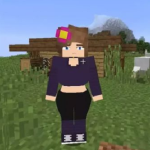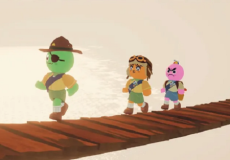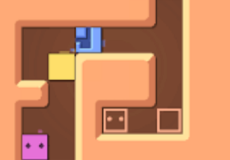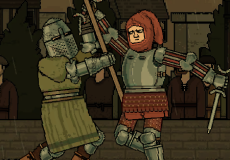

The Great Outdoors
Advertisement
The Great Outdoors is a mobile game built around the idea that movement in real life powers progress inside the game world. From the very beginning, players are introduced to a small settlement where they take on the role of a miller’s assistant. The location is in need of rebuilding, and every step taken outside the game becomes a valuable resource for restoring and expanding it. Steps are tracked through the phone’s sensors or a connected device, and they serve as the primary form of in-game currency. The player decides how to spend them: traveling to new areas, interacting with characters, or working on repairs. Because the game ties progress directly to real-world activity, each session starts not with a login but with actual walking or running.
Advertisement
Similiar games
The Great Outdoors is a mobile game built around the idea that movement in real life powers progress inside the game world. From the very beginning, players are introduced to a small settlement where they take on the role of a miller’s assistant. The location is in need of rebuilding, and every step taken outside the game becomes a valuable resource for restoring and expanding it. Steps are tracked through the phone’s sensors or a connected device, and they serve as the primary form of in-game currency. The player decides how to spend them: traveling to new areas, interacting with characters, or working on repairs. Because the game ties progress directly to real-world activity, each session starts not with a login but with actual walking or running.
Step-based exploration and building
The gameplay revolves around turning collected steps into meaningful actions. Once a certain number of steps is available, the player can spend them to move across the map, gather resources, and take on different assignments. The world is split into zones, each with distinct tasks, from repairing buildings to clearing paths for future travel. The early stages introduce basic objectives that require few steps, allowing players to understand the system. As the game progresses, challenges demand a higher step count, pushing players to move more in daily life to reach new milestones. This structure creates a natural loop of walking, earning, and investing in the settlement’s growth.
Progression through activity
Unlike games that rely on timers or in-game currency earned through tapping or waiting, The Great Outdoors bases its entire advancement system on physical movement. The player’s actual steps are the only resource needed to explore and expand the virtual environment. This means progress is directly linked to personal routines — walking to a bus stop, going on a lunch break stroll, or doing household chores can all generate steps that later fuel in-game progress. It creates a predictable yet engaging rhythm, where daily actions outside the game have a clear effect on achievements inside it.
Main features
· Core mechanic based on step counting from real-world activity
· Settlement repair and expansion through resource use
· Different zones with unique objectives and routes to unlock
· No time-based restrictions; progress depends on movement
· Optional in-app purchases that do not affect core mechanics
Community and long-term play
Players of The Great Outdoors often share their progress, strategies, and discoveries in online discussions. Many focus on optimizing their step usage, deciding whether to invest in expanding the map quickly or fully developing existing locations first. The absence of aggressive monetization makes the game accessible to those who want to play entirely for free, relying only on their own movement for progression. Over time, the combination of exploration, building, and real-world activity creates a steady cycle of engagement, allowing players to connect their daily routines with long-term goals in the game.
Discuss The Great Outdoors




















